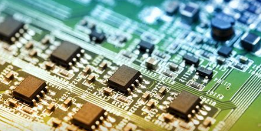Basic Types and Functions of Electronic Circuits
At the core of all electronic devices lies the electronic circuit, a complex coordinator and driver of electrical currents. Diverse in type, these circuits include the open circuit, which, due to disconnections, remains outside the current's circulatory system; the closed circuit, creating an unbroken current cycle even when connected to a depleted battery; and the short circuit, an unexpected condition channeling current along unintended, often hazardous paths. On a grander scale, PCBs and ICs form the bedrock of modern electronics, executing intricate functions through minuscule, precisely-placed components and finding widespread use in myriad devices and appliances.
Classification and Progress of Electronic Components
Electronic components, the building blocks of circuits, come as active or passive varieties. Technological strides have not only enhanced circuit performance, notably in PCBs and ICs, but have also streamlined their construction. Automation now dominates most circuit-building processes. The thoughtful selection and arrangement of these components are pivotal, shaping the circuit's performance and complexity. As IC and PCB applications grow increasingly intricate, so too do their fabrication and assembly, demanding specialized equipment, advanced technology, and rigorous quality standards.

Function and Importance of Passive Components
Passive components, including capacitors, resistors, and inductors, are circuit essentials. Capacitors, storing energy electrostatically, are crucial in current and voltage regulation, finding use in filtering, hold-up, and timing applications. Resistors, through their resistance, control current and voltage, safeguarding circuits against excessive currents. Inductors store energy magnetically, releasing it as needed, and are key in frequency selection and power conversion. Despite their non-energy-generating nature, these components are indispensable, ensuring circuits' stable operation and functionality.
The Role and Application of Active Components
Active components, like diodes and transistors, are the doers in electronic circuits. Diodes, permitting one-way current flow, are instrumental in rectification, signal demodulation, and voltage protection. Transistors, semiconductor devices at heart, function as circuit switches or amplifiers and have found a home in computers, communication devices, audio systems, and beyond. Their evolution has spurred electronic technology forward, leading to more efficient, compact, and potent devices.
In sum, a deep dive into electronic circuits and components reveals the intricacies of their operation and their pivotal role in modern technology. Whether active or passive, these components underpin electronic technological progress, driving innovations that enhance our daily lives. Looking ahead, we anticipate even more precise and efficient component design and circuitry, propelling electronic technology to new heights.
